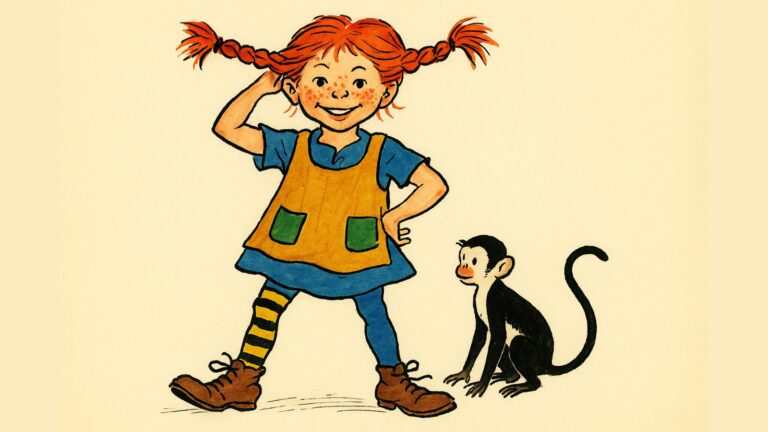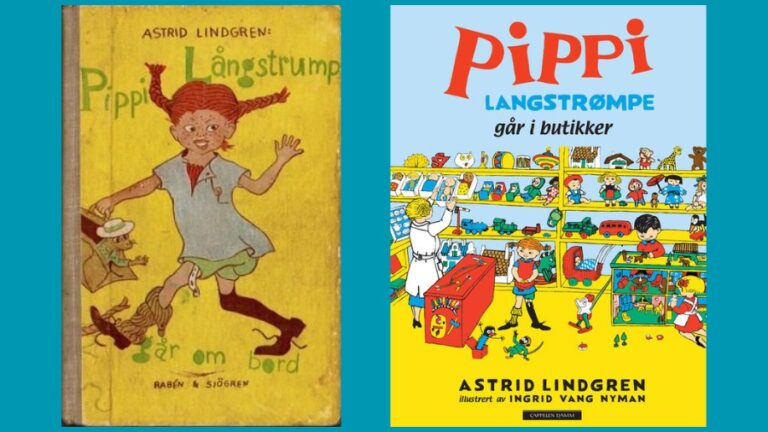Although Pippi originates from Sweden, her influence permeates throughout Scandinavia, including Norway. Her adventures and the values she embodies are cherished across the region.
First introduced to the world in 1945 through the pen of Swedish author Astrid Lindgren, the unconventional, freckle-faced girl with red pigtails and superhuman strength has become one of Scandinavia’s most beloved literary creations.

In 2025, Pippi Longstocking (Pippi Langstrømpe) turns 80. While she may hail from Sweden, Pippi’s influence transcends borders, resonating deeply with generations of Norwegians. Let's take a closer look at this cultural icon.
A Timeless Character
With her mismatched stockings, horse on the veranda, and total disregard for authority, Pippi Longstocking has always been more than a children's character. She represents freedom, independence, and a child’s ability to question adult norms.
These traits struck a chord not only in post-war Sweden but also across neighbouring Norway, where Pippi quickly became a fixture on family bookshelves and TV screens.
Pippi first appeared in book form in 1945, when Pippi Långstrump was published by Rabén & Sjögren in Sweden. Astrid Lindgren had created the character for her daughter Karin, and the stories, brimming with whimsy, strength, and subversive humour, captured imaginations instantly.
The first book introduces Pippi as the fearless, self-sufficient girl who lives alone (except for her horse and monkey) in the colourful Villa Villekulla. With no parents to tell her what to do, she charms and bewilders her neighbours, especially the sensible Tommy and Annika.
The book was soon followed by Pippi Goes on Board and Pippi in the South Seas, forming a trilogy that remains at the heart of the Pippi canon.
Together, they have been translated into more than 75 languages, including English and Norwegian. In Norway, they were first published by Cappelen Damm, who continue to print and distribute her adventures to this day.

The Norwegian translations preserve Pippi’s quirky charm, and the books remain widely available in libraries and bookstores throughout the country.
Norwegians also became familiar with Pippi through screen adaptations. The most famous is the 1969 Swedish television series starring Inger Nilsson, which was dubbed into Norwegian and broadcast repeatedly on NRK.
The series and its spin-off films cemented Pippi's image in the Nordic consciousness. Her wild red pigtails, strength, and irreverent humour were brought vividly to life.
Even today, these adaptations hold nostalgic value and are regularly available on streaming platforms.
Her stories have also inspired numerous Norwegian theatre productions and school performances, often staged as lively musicals that invite children to sing along and embrace Pippi's unorthodox worldview.
Scandinavian Values in Fiction
Part of what makes Pippi Longstocking such a cultural icon in Norway is the way she reflects core Scandinavian values.
Her fierce sense of justice, loyalty to her friends, and ability to think critically all align with the egalitarian spirit valued across the Nordic countries.
In a society like Norway’s, where children’s rights and independence are taken seriously, Pippi feels remarkably relevant even decades after her debut.
Moreover, she stands out in a literary tradition that, like Norway’s own children’s stories, often avoids sugar-coating reality.
Much like Norway’s Karius og Baktus or the adventures of Knerten, Pippi’s world is full of humour and chaos, but never condescends to young readers. She’s imaginative, occasionally anarchic, but always grounded in empathy and strength.
A Lasting Presence in Norway
Pippi Longstocking has enjoyed a lasting presence in Norway’s public life. In 2020, NRK aired a special Pippi-themed Christmas series, and Norwegian libraries regularly feature her books in themed displays.
School curricula often include Astrid Lindgren’s work, and Pippi remains a common sight at costume parties, school plays, and even feminist marches.
Her story has also found a place in academic and cultural discussions. Norwegian scholars and educators have long pointed to Pippi as a symbol of empowerment, especially for girls of course.
She’s also been embraced by artists and illustrators across the region, influencing visual styles and children’s book trends in Norway as well as Sweden.
More Than a Children’s Character
At 80 years old, Pippi's legacy is not only one of entertainment but of inspiration. Whether she’s swinging from a tree, outsmarting a pompous adult, or navigating the world on her own terms, Pippi continues to delight and challenge her readers.
As the Nordic world celebrates her 80th anniversary, Norwegians of all ages will no doubt raise a toast, or perhaps an ice cream cone, in honour of the strongest girl in the world.

